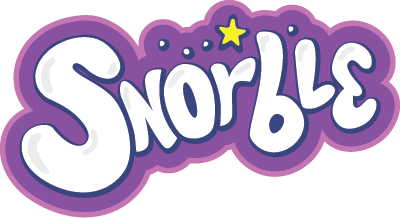Children who learn how to self-regulate their emotions grow into healthier, happier adults who can do the same. It’s one of the most valuable lessons you can teach a young child- but how do you even start? Especially if you weren’t given much guidance as a child, it’s as easy to build bad habits as teach good ones. Yet, as their caregiver, you’re going to have an impact on how your child learns to handle their emotions. Everything they see modeled, hear, and are told about themselves and their emotions can have an impact. Here’s five top tips on emotional self-regulation for children from Team Snorble.
What is Emotional Self-Regulation for Children?
What is emotional self-regulation, anyway? It’s the process of managing both behavior and emotions in a way that’s appropriate to the situation. It’s resisting the urge to always toss out highly-charged reactions, it’s calming yourself if you’re upset, or readjusting your expectations without a meltdown and your frustrations without an outburst
These aren’t easy skills to learn, and we’re sure you know many adults who haven’t managed it. It’s hard, especially if a child is neurodivergent and sees the world a little differently. But it’s an incredibly valuable toolkit to work on with your child
Strategy #1 - Understand feelings
Emotional intelligence is a key part of developing emotional self-regulation. Noticing feelings, understanding them, and developing a nuanced emotional vocabulary helps a child learn what’s appropriate to respond with.
For example, many children are socialized to understand anger. But few explore more complex, similar emotions. Are they anxious? Sad? Frustrated? Disappointed? These can all feel a little like anger. If a child only knows ‘anger’ and nothing else, then everything will be reacted to in anger. If they can identify other emotions, they can better interpret difficult moments and respond more appropriately.
Strategy #2 - Understand how those feelings feel
Once a child has a good vocabulary of feelings, it’s as important that they can identify them within themselves as they can understand them abstractly.
To do this, a caregiver must let the child actually feel emotion. Too many guardians lapse straight to "Control yourself" as a response to any big emotion in their child. While it can be difficult to deal with little people exploring a big world for themselves for the first time, this is a critical parental journey you must make with them.
Instead of ignoring difficult and complex emotions, explore them and suggest how to manage them. It’s in recognition and appropriate response, not blanket suppression, that emotional self-regulation is born.
Strategy #3 - Allow expression of emotion
Many caregivers jump in to suppress awkward emotions immediately, and we understand that! It’s a natural instinct to try and contain the situation and not impinge on others. Yet it inadvertently creates a situation in a young mind where emotions are a no-go- and as we’ve noted, when they don’t explore their emotions, they never learn to tell what they’re feeling or how to handle it in a better way. This ends up with a teen or young adult that bottles up feelings and explodes.
Instead, try to patiently work through the emotion with them. Instead of big feelings, get them to work on identifying and communicating what’s happening so you can fix it together.
Strategy #4 - Teach regulation
Teaching coping skills is, of course, the most important part! It’s a big step, with many parts, and will look different for every child. Don’t feel bad if it takes a while to learn it as a parent. But now your child understands emotions both abstractly and in themselves, understands that there are many big emotions to feel, and has learned to communicate with you before they pop. So it’s time to teach them one, or some, techniques to regulate.
Some kids thrive with an ‘emotional regulation plan’. Some like a coping game, or the ‘five senses’ trick to establish some calm. Gamification is always great, because it makes learning life skills fun. The idea is to help them move away from the in-built impulse to inappropriate behavior, and instead move to reflection and choosing how to respond in a better way.
Strategy #5 - Practice what you preach
As adults set in our ways, this is the toughest one! Children learn most by copying adults around them, especially beloved figures like their parents. You can teach them all the emotional regulation in the world, but if they regularly see you fly off the handle, especially if you ‘get results’ at the expense of others, they will internalize that that’s the way to handle emotion.
They don’t need you to be perfect, but they do need to see you trying to do the same as you want them to- identify and understand your emotions, pause before you react, and choose appropriate responses instead of always flying off the handle, especially if its rage, anger, or negative emotion directed to them.
An Introduction to Snorble®
Unfortunately, as an adult, we have to tackle our poor emotional communications ourselves! However, for your little one, you can leverage the power of imagination and childhood joy through Snorble. To your child, Snorble will become their snuggle buddy, and a fun way to express themselves. Yet we’ve leveraged the power of AI to gamify the self-soothing process, subtly introducing them to new strategies to learn about themselves and the world in a healthy, happy way. Plus we give you valuable data and feedback about your child! Why not let Snorble help you teach your child to handle their big emotions in a healthy manner, and set your child up for a future of success today?


